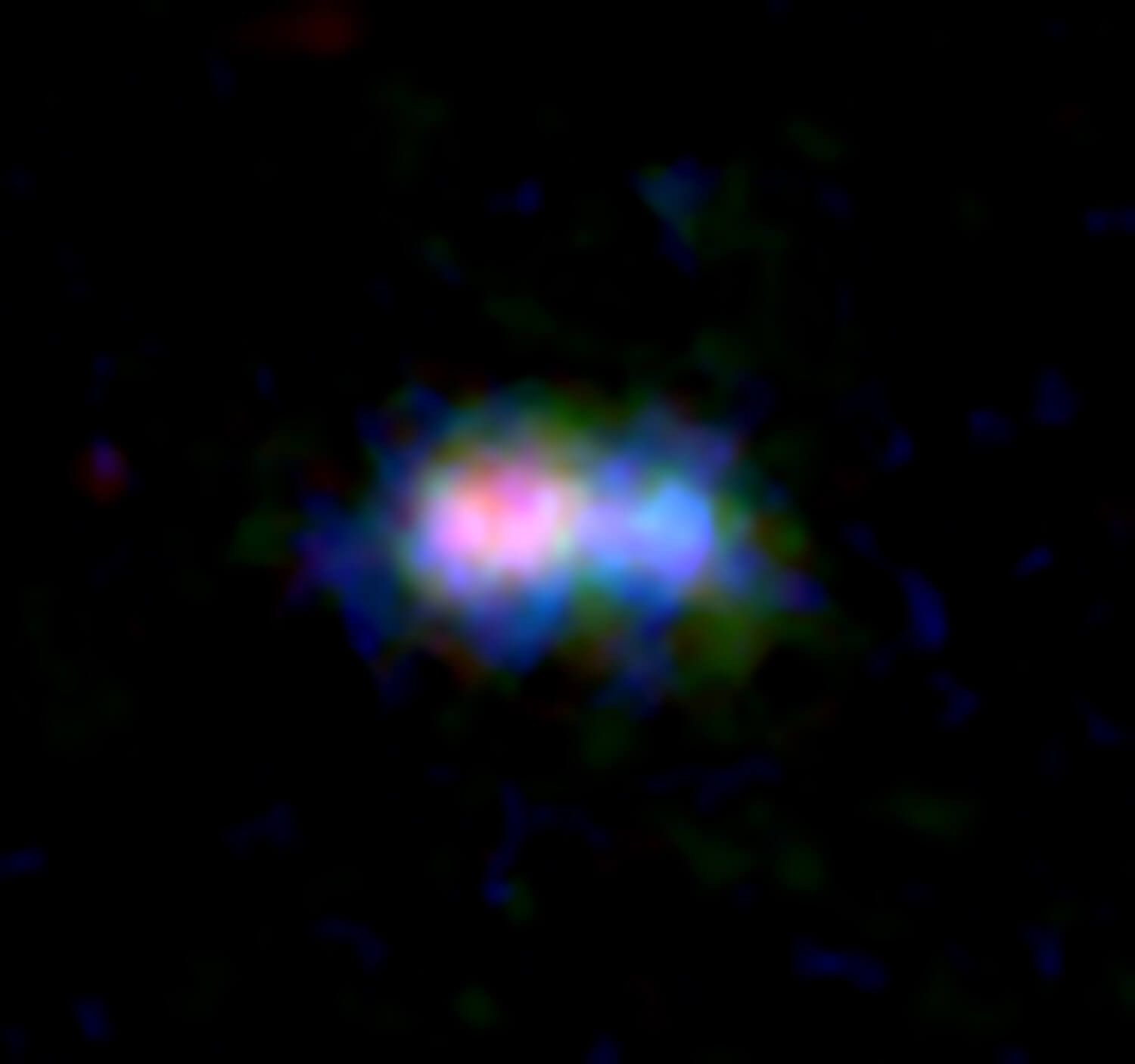Using an array of ALMA radio telescopes, astronomers studied the MACS0416_Y1 galaxy, 13.2 billion light-years away from Earth in the direction of the Eridanus constellation, and were surprised to find in it an unusual large amount of dust that standard models cannot explain. This led them to rethink the history of star formation and to assume that the object of the study experienced stepped star formation with two intense bursts 300 and 600 million years after the Big Bang.
Dust and relatively heavy elements, such as oxygen, spread when stars die. Therefore, the detection of dust at a certain point in time indicates that many luminaries have already formed and died long before that.
-Yoichi Tamura, lead author of the study from Nagoya University (Japan)
The stars are the leading actors on the stage of the universe, but behind-the-scenes players promise them: stardust and gas. At the same time, cosmic clouds of dust and gas are not just places of star formation, but also skilled storytellers of the history of the universe.
Because of the limited speed of light, the radio waves from the MACS0416_Y1 galaxy that we are seeing today took 13.2 billion years to reach us. In other words, they give an idea of how it looked just 600 million years after the Big Bang.
In the data obtained, astronomers found a weak but unambiguous signal of radio emission from dust particles. At the same time, the Hubble and Spitzer space telescopes, as well as the Very Large Telescope of the European Southern Observatory (ESO), estimated the age of stars in the galaxy at 4 million years.
There was too much dust, it could not have been formed in 4 million years. Old stars may be hiding in the galaxy, or they may have already died and disappeared.
-Yoichi Tamura
Astronomers reviewed several ideas to overcome this dust inflation and developed a computer model that linked both the age of the stars and the amount of dust.
In this model, the first burst of star formation began 300 million years after the Big Bang and lasted 100 million years. After that, star formation activity subsided for a while, and then resumed when the universe was 600 million years old.
-Ken Mavatari, co-author of the study at the University of Tokyo (Japan)
Astronomers believe that they found MACS0416_Y1 at the beginning of the second stage of star formation.
Dust is an important material for planets like Earth. Our result is an important step forward for understanding the early history of the universe and the origin of dust,.
-Yoichi Tamura
MACS0416_Y1 – a galaxy full of dust
Click To Tweet
The post MACS0416_Y1 – a galaxy full of dust appeared first on Upcosmos.com.
